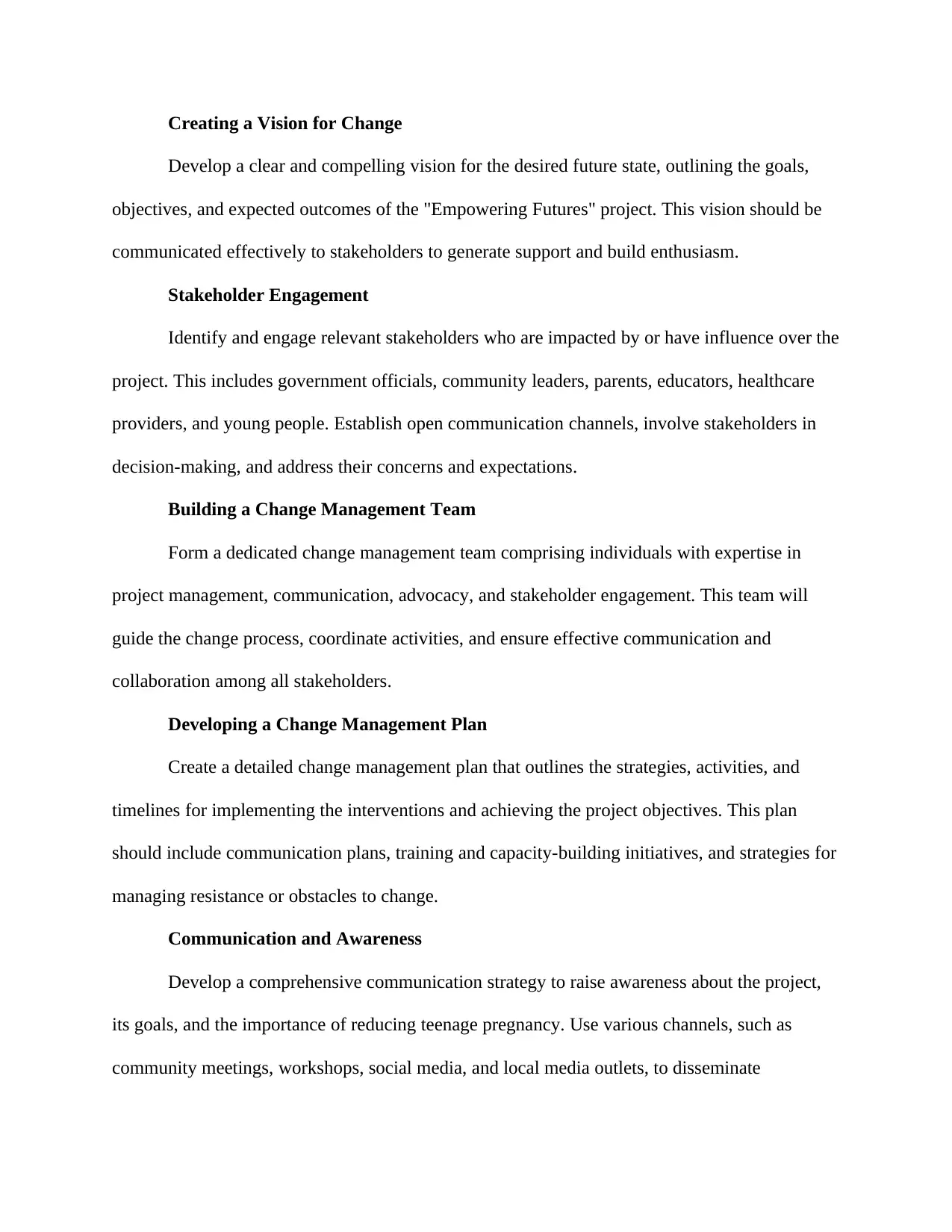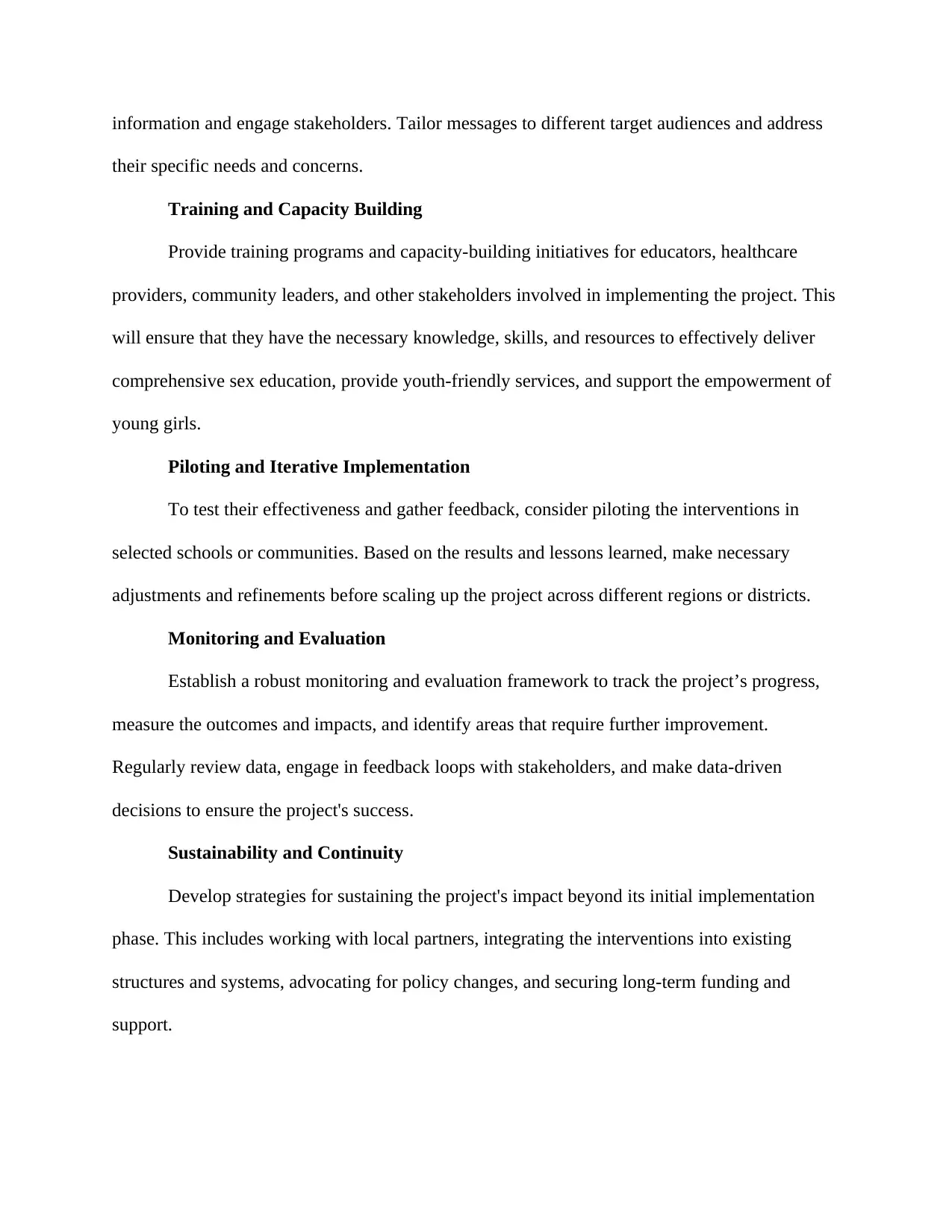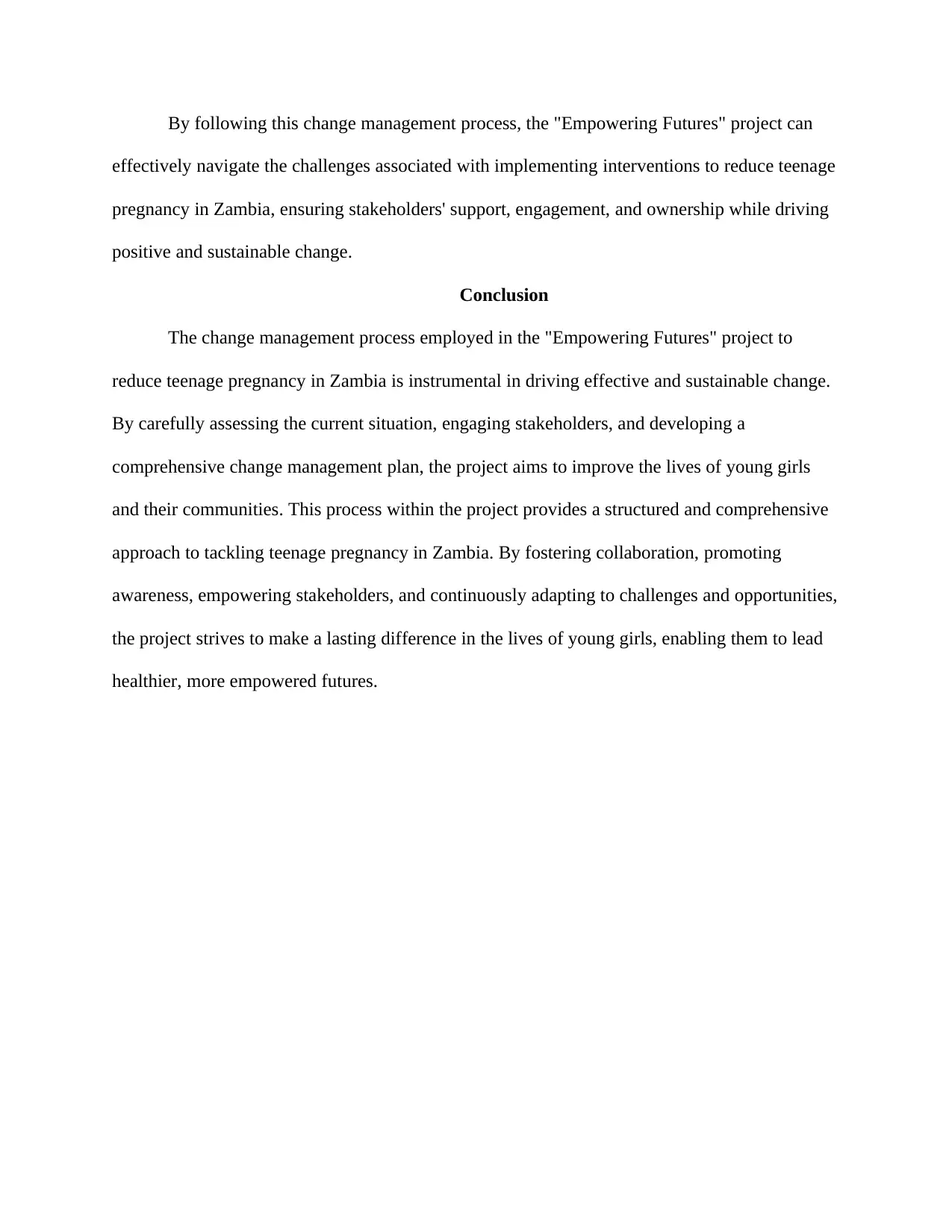Empowering Futures Project: Change Management & Teenage Pregnancy
VerifiedAdded on 2023/06/26
|4
|901
|161
Project
AI Summary
The 'Empowering Futures' project is a comprehensive initiative designed to tackle the pressing issue of teenage pregnancy in Zambia, which has one of the highest rates in sub-Saharan Africa. The project employs a strategic change management process, beginning with an assessment of the current situation, the creation of a compelling vision, and stakeholder engagement including government officials, community leaders, parents, educators, healthcare providers, and young people. A dedicated change management team develops a detailed plan encompassing communication, training, and capacity building, with interventions piloted and iteratively implemented. The project emphasizes monitoring, evaluation, sustainability, and continuity, aiming to integrate interventions into existing systems and secure long-term support. By fostering collaboration, promoting awareness, and empowering stakeholders, the 'Empowering Futures' project strives to make a lasting impact on the lives of young girls, enabling them to lead healthier and more empowered futures, and contributing to the overall development of their communities. This holistic approach provides a structured framework for reducing teenage pregnancy rates and driving positive change in Zambia.
1 out of 4











![[object Object]](/_next/static/media/star-bottom.7253800d.svg)